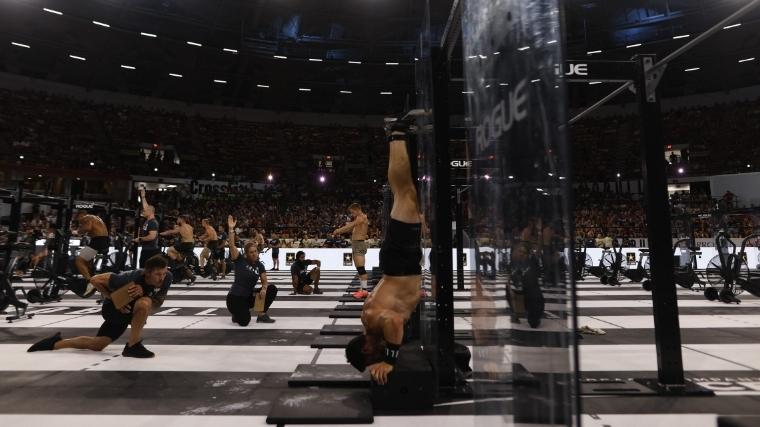Drowning

Drowning is a silent killer, often occurring quickly and unexpectedly. It is a leading cause of unintentional injury death worldwide, and its dangers are particularly amplified in water-based competitions like the CrossFit Games. Understanding the physiological processes involved in drowning, the contributing factors, and the warning signs is crucial for ensuring the safety of athletes and spectators.
Physiological Processes Involved in Drowning
The physiological processes involved in drowning are complex and can lead to rapid deterioration of the body’s functions. When a person’s airway is submerged in water, they instinctively attempt to breathe, but instead inhale water into their lungs. This triggers a cascade of events:
- Water fills the lungs, preventing oxygen from reaching the bloodstream. The body’s oxygen levels plummet, leading to hypoxia, a condition where the body’s cells are deprived of oxygen.
- The heart rate increases as the body struggles to compensate for the lack of oxygen. The heart may become irregular, eventually leading to cardiac arrest.
- The body’s pH level decreases, becoming more acidic, as the body attempts to remove carbon dioxide, a byproduct of respiration, from the blood.
- The brain is particularly vulnerable to oxygen deprivation. Within minutes, brain damage can occur, leading to coma and even death.
Factors Contributing to Drowning in CrossFit Games Events
Several factors can increase the risk of drowning during CrossFit Games events, where athletes push their physical limits in challenging aquatic environments:
- Water Conditions: Rough water, strong currents, and low visibility can significantly increase the risk of drowning. Even experienced swimmers may struggle to stay afloat in challenging water conditions.
- Athlete Fatigue: Intense physical exertion during CrossFit Games events can lead to fatigue, compromising swimming ability and increasing the risk of drowning. Exhausted athletes may not be able to maintain their stroke or stay afloat effectively.
- Lack of Proper Safety Protocols: Inadequate safety measures, such as insufficient lifeguards, a lack of proper rescue equipment, and a failure to enforce safety rules, can exacerbate the risk of drowning during competitions.
Warning Signs of Drowning
Recognizing the warning signs of drowning is crucial for prompt intervention and potentially saving lives. It’s important to note that drowning is often silent and can occur quickly. The following signs may indicate that someone is in trouble:
- Head tilted back, mouth open: This is a common sign as the person tries to keep their airway above the water.
- Eyes glassy and unfocused: The person may appear to be staring straight ahead, but they are not looking at anything specific.
- Struggling to stay afloat: The person may be thrashing their arms and legs, trying to keep their head above water.
- Unable to respond to questions or calls for help: This is a clear sign that the person is in distress and needs immediate assistance.
Safety Measures and Prevention Strategies: Crossfit Games Drowning

The CrossFit Games, renowned for their demanding physical challenges, also incorporate water-based events. While these events add a thrilling dimension, they necessitate a comprehensive safety plan to mitigate risks and ensure the well-being of athletes. This plan should encompass a multi-layered approach, involving meticulous planning, dedicated personnel, and appropriate equipment.
Safety Plan for Water-Based Events, Crossfit games drowning
A comprehensive safety plan is crucial for water-based events, addressing potential hazards and ensuring the safety of athletes. The plan should include the following elements:
- Risk Assessment: Conduct a thorough assessment of potential hazards associated with the specific water-based event, considering factors like water depth, currents, weather conditions, and athlete skill levels.
- Water Conditions Monitoring: Implement continuous monitoring of water conditions, including temperature, clarity, and presence of debris. Regularly assess the suitability of the water for the event.
- Emergency Response Plan: Develop a detailed emergency response plan, outlining procedures for handling emergencies such as athlete distress, equipment failure, or sudden changes in weather.
- Communication System: Establish a clear and reliable communication system between event staff, lifeguards, and emergency responders, enabling prompt communication and coordination in case of emergencies.
- Pre-Event Briefing: Conduct mandatory pre-event briefings for all athletes, covering safety protocols, emergency procedures, and specific hazards associated with the water-based event.
- Post-Event Debriefing: After each event, conduct a debriefing session to review safety measures, identify areas for improvement, and incorporate lessons learned into future events.
Roles and Responsibilities
A well-defined structure with clear roles and responsibilities is essential for ensuring athlete safety. The following table Artikels the key personnel involved in water-based events and their responsibilities:
| Role | Responsibilities |
|---|---|
| Event Director | Overall responsibility for the safety of athletes, overseeing the implementation of the safety plan, and coordinating with all personnel involved. |
| Safety Officer | Responsible for the safety plan, conducting risk assessments, and ensuring compliance with safety regulations. |
| Lifeguards | Monitoring athletes in the water, providing immediate assistance in case of distress, and implementing rescue procedures if necessary. |
| Medical Staff | Providing on-site medical care, assessing injuries, and coordinating with emergency responders if required. |
| Water Safety Team | Assisting lifeguards with water safety duties, monitoring water conditions, and providing support during emergencies. |
Safety Equipment and Procedures
The use of appropriate safety equipment and adherence to established procedures are crucial for mitigating risks and ensuring athlete well-being.
- Lifeguard Presence: Adequate numbers of certified lifeguards should be present at all times, strategically positioned to ensure full coverage of the water area.
- Life Jackets: Athletes should be required to wear life jackets, specifically designed for water sports, during events involving open water or significant water depth.
- Rescue Equipment: Essential rescue equipment, including rescue boats, flotation devices, and rescue ropes, should be readily available and accessible to lifeguards.
- First Aid Kit: A comprehensive first aid kit, specifically tailored for water-related injuries, should be readily available on-site, along with trained personnel to administer first aid.
- Weather Monitoring: Constant monitoring of weather conditions is essential, with procedures in place to suspend or postpone events in case of inclement weather or unsafe conditions.
- Communication Devices: Lifeguards and other safety personnel should be equipped with reliable communication devices, such as two-way radios, to facilitate prompt communication and coordination during emergencies.
“Safety is not a spectator sport. It requires active participation from everyone involved.”
Crossfit games drowning – The CrossFit Games, known for their grueling physical and mental demands, have seen instances of athletes struggling with the challenges, including the potential for drowning during water-based events. Lazar Dukic, a rising star in the CrossFit world, is set to compete in the 2024 Games, as detailed in this article , showcasing his journey to the top.
While Dukic’s strength and endurance are evident, navigating the aquatic events will require not only physical prowess but also strategic planning and a deep understanding of water safety protocols, crucial to preventing potential drowning incidents.
The CrossFit Games, a demanding test of athleticism and endurance, have seen their share of challenges, including instances of competitors experiencing physical distress. One aspect often discussed is the impact of age on performance, as exemplified by the career trajectory of athletes like Lazar Dukic, whose age and its influence on his CrossFit prowess are explored in detail here.
While age can play a role, the Games’ demanding nature underscores the importance of comprehensive training and a deep understanding of the body’s limits to prevent potential health risks.